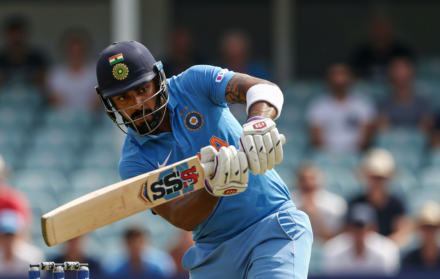
What Are The Best Tips For Running Quick And Safe Singles In Cricket
Running quick and safe singles in cricket is a crucial skill that can make a significant difference in a match. It not only allows batsmen to accumulate runs efficiently but also puts pressure on the fielding team. Mastering the art of running between wickets requires a combination of technique, communication, judgment, and practice. Here is a breakdown of the best tips to excel in running quick and safe singles in cricket.
Effective running between wickets can turn singles into doubles and doubles into triples, maximizing the scoring potential of a batsman and the team. It helps maintain momentum and keeps the fielders on their toes. running quick singles can create opportunities for scoring boundaries and building partnerships.
To excel in running quick and safe singles, consistent practice is essential. Regular drills focusing on running technique, speed, agility, and reflexes can significantly enhance a batsman’s ability to take quick singles. maintaining physical fitness is crucial to improve sprinting speed and endurance, which are vital components of running between wickets.
By implementing these tips, batsmen can become proficient in running quick and safe singles, giving their team a competitive advantage and maximizing their own scoring potential in the game of cricket.
Importance of Running Between Wickets

Running between wickets is crucial in cricket as it emphasizes the importance of running between wickets. It allows batsmen to score runs quickly and keep the pressure on the fielding team, highlighting the significance of running between wickets.
It is important to constantly communicate with your batting partner and accurately judge the fielding positions to run effectively, emphasizing the importance of running between wickets. Quick and efficient running requires agility, speed, and coordination between the batsmen, emphasizing the significance of running between wickets.
By running between wickets, batsmen can convert singles into twos and maximize their scoring opportunities, further highlighting the importance of running between wickets.
Good running between wickets can also put pressure on the fielders, leading to misfields and extra runs, once again emphasizing the significance of running between wickets. Thus, the importance of running between wickets cannot be overstated in cricket, emphasizing its crucial role.
Techniques for Running Quick Singles

Looking to up your game in cricket? In this section, we’ll uncover the secrets to running lightning-fast singles on the field.
Get ready for some explosive techniques that will amp up your reaction time, improve your communication with your partner, help you read the field placement like a pro, and make sure every decision you make is spot on. Stay tuned as we dive into the strategies that will set you apart in the game of cricket!
Quick Reaction Time
To excel in cricket and execute successful singles, it is imperative to possess a quick reaction time. Reacting instantly to the ball and making rapid decisions enable batsmen to effectively steal singles.
The development of quick reaction time hinges on several key factors such as unwavering focus on the ball, anticipation of the delivery, and awareness of field placements. Batsmen ought to dedicate themselves to specific drills and practice sessions to sharpen their reflexes.
By honing their quick reaction time, batsmen have the ability to elevate their batting performance, elevate the team’s scoring rate, and apply pressure on the opposition.
Communication with the Partner
Communication with the partner is crucial for successfully executing quick and safe singles in cricket. To achieve this, players must establish a clear and effective communication system that minimizes confusion and maximizes scoring opportunities.
A key aspect of this system is employing quick and positive calling, where the striker confidently calls for the run and the non-striker promptly responds. Furthermore, non-strikers should remain alert and prepared to back up, ensuring a swift reaction to any potential runs.
Reading the Field Placement
Reading the field placement is crucial for running quick and safe singles in cricket. This involves carefully observing the positioning of fielders to identify any gaps in the field where the ball can be placed for a single. The key points to consider when reading the field placement are as follows:
- Observe fielders: Pay close attention to the positions of the fielders and look for any gaps where you can place the ball to score a single run.
- Identify the fielding strategy: It’s important to understand the captain’s plan in terms of aggressive or defensive field placements.
- Recognize strengths and weaknesses: Assess the strengths and weaknesses of the fielding side to intelligently exploit any gaps in their positioning.
- Anticipate fielder movement: Try to anticipate how the fielders might react to the shot you play and plan your run accordingly.
- Coordinate with the non-striker: Maintain communication with your partner to ensure smooth running between the wickets and avoid any confusion.
Remember, reading the field placement is an essential skill in cricket that can greatly enhance your ability to score singles effectively.
Good Judgment and Decision Making
Good judgment and decision making are essential when it comes to running quick and safe singles in cricket. It is crucial to assess the field placement, communicate effectively with your partner, and promptly make decisions based on the situation.
Reading the field and accurately judging the timing of the run are pivotal skills to avoid run-outs. Having a solid grounding of the bat, employing proper running technique, and comprehending the fielder’s throw all contribute to ensuring the safety of singles.
By consistently practicing these skills and maintaining physical fitness, players can enhance their judgment and decision making abilities, ultimately leading to successful running between the wickets.
Tips for Running Safe Singles

Running singles in cricket requires not only speed but also a smart approach. In this section, we will uncover the key tips for running safe singles, equipping you with the knowledge to make split-second decisions on the field.
From perfecting your batting technique to understanding the fielder’s throw, and even mastering the art of sliding to avoid run-outs, these tips will be your strategic toolkit for successful singles. So, let’s lace up our boots and dive into the world of running safe singles in cricket!
Proper Grounding of Bat
When playing cricket and aiming for quick and safe singles, it is crucial to ensure the proper grounding of the bat. Following these steps will help you achieve proper grounding:
- Securely hold the bat with both hands.
- Firmly plant your leading foot in front of the crease.
- Extend the bat towards the ground, making sure it touches the ground inside the crease.
- While grounding the bat, maintain balance and control.
- Keep the bat grounded until you reach the opposite end of the pitch.
Proper grounding of the bat is not only important for running quick and safe singles in cricket but also ensures that you do not get run out if the bails are dislodged. It is an essential technique that every cricketer should master.
Running with Correct Technique
To run with correct technique in cricket, Running with Correct Technique, follow these steps:
- Stay low and maintain a wide stance at the crease.
- Push off explosively with your back foot.
- Keep your head up and eyes focused on the field.
- Take short, quick strides and pump your arms for speed.
- Run in a straight line, avoiding unnecessary movement.
- Keep your bat grounded and close to your body for a quick turnaround.
- Slide your bat while crossing the crease to avoid run-outs.
Fact: Running with Correct Technique can significantly improve your scoring rate and help you accumulate quick singles, keeping the fielding team under pressure.
Understanding the Fielder’s Throw
Understanding the fielder’s throw is crucial when it comes to executing quick and safe singles in the game of cricket. Below are the steps to follow:
- Pay close attention to the fielder: Take note of their position and arm strength to anticipate the speed and accuracy of their throw.
- Evaluate the distance: Assess the gap between yourself and the fielder to determine whether it is safe to attempt a single or if it would be wiser to remain in your current position.
- Time your run perfectly: Initiate your sprint as soon as the ball is released from the fielder’s hand, ensuring you have a head start to make it to the opposite end.
- Select the appropriate end: Consider the space between the fielder’s position and the non-striker’s end to decide which direction you should run towards.
- Keep your focus on the ball: Stay alert and track the trajectory of the ball to make any necessary adjustments to your speed or change your course if required.
Sliding Technique to Avoid Run Out
To avoid getting run out in cricket, mastering the sliding technique is crucial. Here are the steps to perform the Sliding Technique to Avoid Run Out effectively:
- Identify the need to slide: Assess the situation and follow the non-striker’s call to determine if sliding is necessary.
- Approach with low body position: As you run towards the end, lower your body, and prepare for the slide.
- Slide bat first: Extend your arms forward and slide with your bat touching the ground before your body slides.
- Protect your body: Keep your head up and try to avoid any direct contact with the fielder or the ball.
- Maintain control: Slide smoothly, stay balanced, and control your momentum to regain stability quickly.
Remember, practicing this Sliding Technique to Avoid Run Out can significantly reduce the risk of getting run out and improve your overall performance on the field.
Common Mistakes to Avoid

When it comes to running quick and safe singles in cricket, it is important to be aware of common mistakes to avoid that can cost you runs. Here are some key errors that you should steer clear of:
- Lack of communication between batsmen, leading to confusion and run-outs.
- Slow reaction time or hesitation when deciding to take a quick single.
- Deviating from the direct path between wickets and failing to run straight.
- Failing to ground the bat behind the crease when completing a run.
Power of Practice and Fitness

Practicing regularly and staying physically fit are essential for harnessing the power of practice and fitness, enabling you to run quick and safe singles in cricket.
- Regularly work on your running technique, agility, and speed to improve your ability to take quick singles. This is an important aspect of the power of practice.
- Maintain a high level of fitness to ensure you have the stamina and endurance to run between the wickets throughout the game. Fitness plays a crucial role in unlocking the power of practice and fitness.





